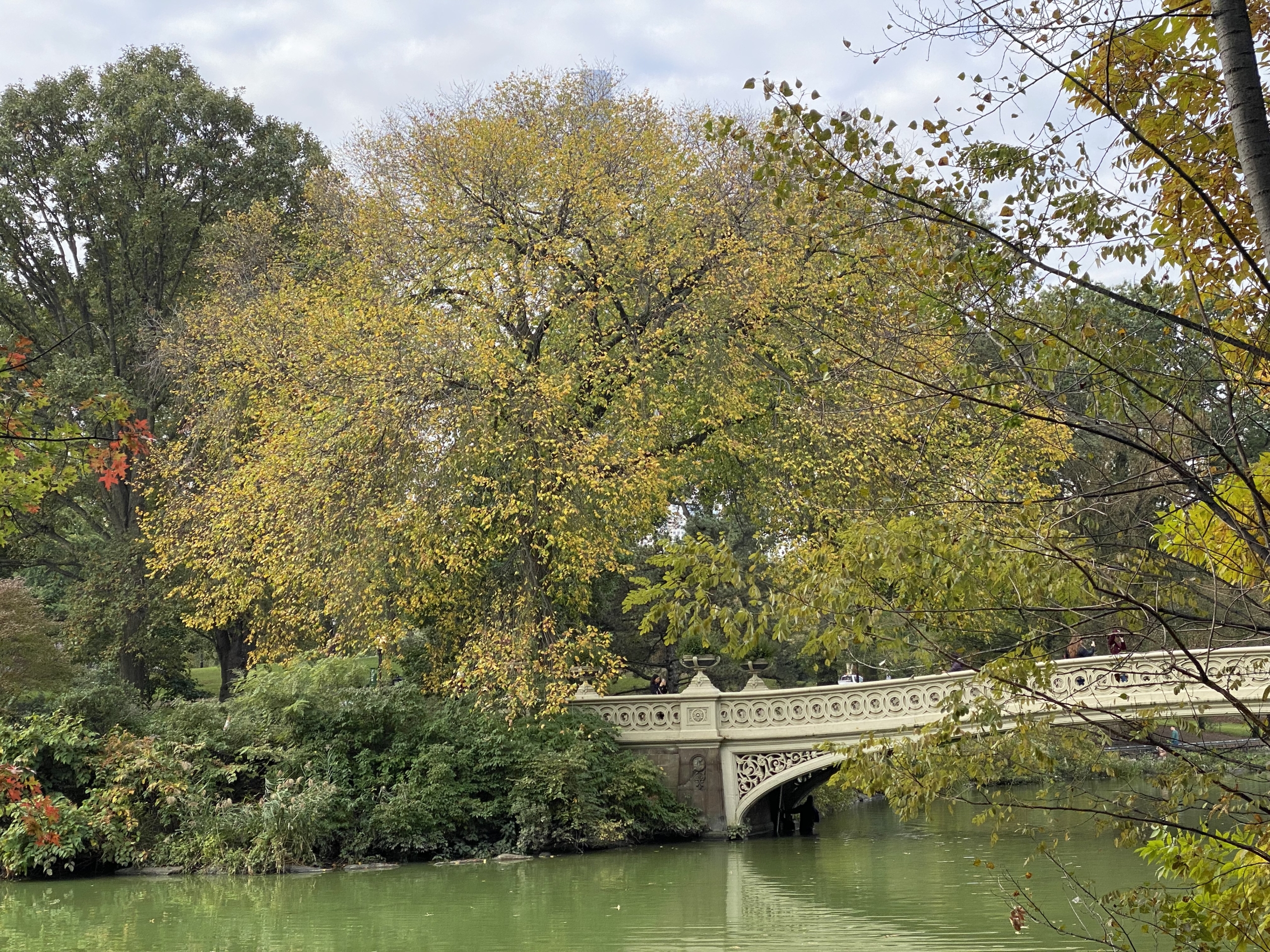
By Bonnie Eissner
Many of the 5.2 million trees in the urban forest of New York are beginning to show their resplendent fall colors and will likely reach peak foliage early next month. So, residents of the leafy Upper West Side, home to 8,746 street trees and tens of thousands more in nearby Central Park and Riverside Park, need not travel far for great leaf peeping and amateur tree science.
In the falling daylight hours of autumn, deciduous trees slow then stop their chlorophyll production to conserve energy for winter. As the green chlorophyll pigment disappears, other pigments emerge. These include carotenoids that emit yellow and orange hues and anthocyanin, a red or purple pigment produced by tree sap that can get trapped in leaves.
Local experts weighed in on where in the neighborhood to find trees that show off these leaf pigments and fall phenomena.
Leslie Day, author of Field Guide to the Street Trees of New York City, has several favorite fall trees. Topping the list are the Kwanzan cherry trees that line Riverside Park’s popular Cherry Walk. The tree has several pigments in its ovate leaves, which turn crimson, orange, and wine in the fall. “They are exquisitely beautiful,” she said in a recent Zoom interview.
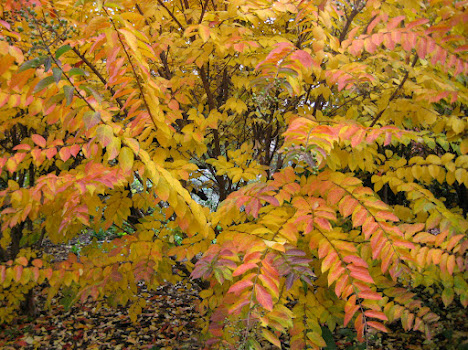
Her other favorite Riverside Park trees include the northern red oaks whose leaves turn reddish brown in the fall and the Norway maples that line the park starting at 79th Street. “There’ll be a carpet of yellow Norway maple leaves on the sidewalk” later in the fall, she said.
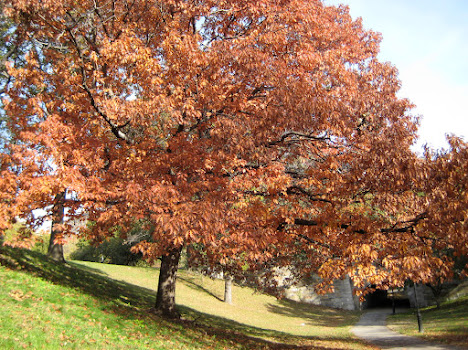
Victoria Bolster, a Riverside Park Conservancy gardener, finds splendor in London plane trees whose maple-shaped leaves turn a rust brown in autumn.
“I think that brown looks really beautiful against the camouflage color of the tree bark,” she said on a recent walk in the park. London planes are the most common tree in New York. Bolster considers the London planes that line the park’s promenades especially pretty on fall afternoons, between 4 and 5 p.m. when the setting sun illuminates their leaves, she said.
With thousands of street trees, New Yorkers can enjoy fall foliage without even going into the parks. The New York City Tree Map, an interactive map of every tree managed by the Parks Department, shows scores of northern red oaks on the Upper West Side as well as American elms, whose leaves turn bright yellow in the fall. The thornless honey locust is another prevalent street tree. Its long, feathery, compound leaves become gold in the fall.
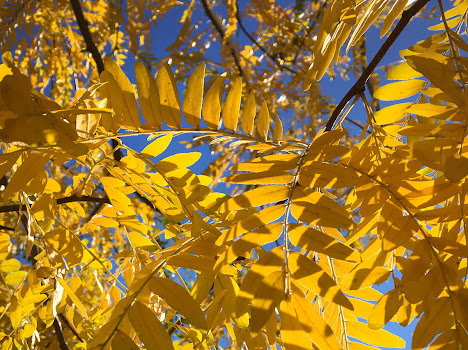
Day has a fondness for the hardy ginkgo biloba, the third most common tree in Manhattan. Its fan-shaped leaves become golden yellow in the fall. Female ginkgos are also known for their fall stink, which emanates from butyric acid (a chemical in human vomit) in their seed coat.
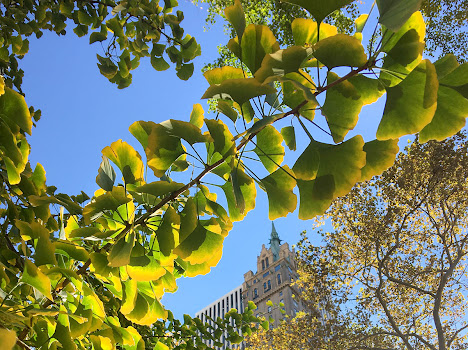
For density of trees and variety, though, Central Park is the place to go. The Central Park Conservancy publishes a fall foliage map and a fall foliage guide, which tracks peak foliage throughout the park.
The lush, maze-like Ramble is the preferred Central Park tree viewing spot of Carey Russell, a naturalist who leads tree identification walks through the Dendro Lab.
“The species diversity here is just wildly more interesting and better than one would find amongst what we call the specimen trees,” he said on a walk in the Ramble last week. “There are some beautiful specimen trees all around the park, but there’s nowhere like the Ramble to really feel like you’re completely removed from the city.”
On an hourlong walk, he pointed out several trees that were unveiling their autumn glory.
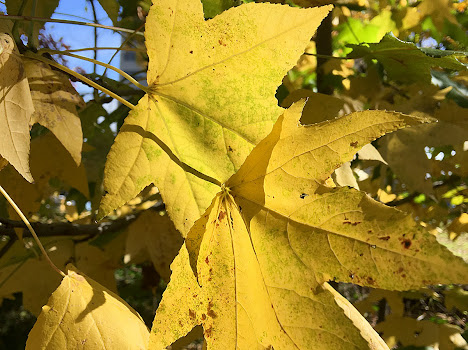
At the Oak Bridge entrance, a sweetgum tree next to The Lake was reclaiming the chlorophyll from its star-shaped leaves. The tree was dressed in gold and green.
Russell noted that trees near open spaces, like lakes, roads and fields, will show the most brilliant fall colors because they receive the most sunlight.
As if to prove the point, an American elm near Bow Bridge had started to burst into sunshine yellow. Nearby, the leaves of a pin oak tree were just turning a fiery red.
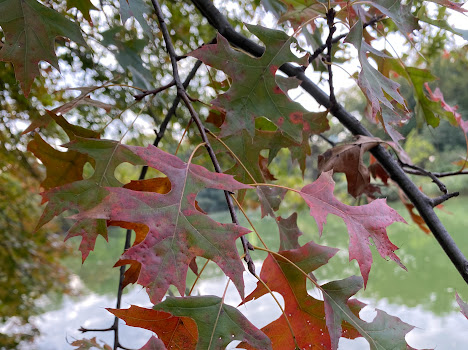
Further on in a small clearing, several of the elliptical leaves of a black cherry tree, which, unlike the Kwanzan cherry, is wild, had turned sunset orange.
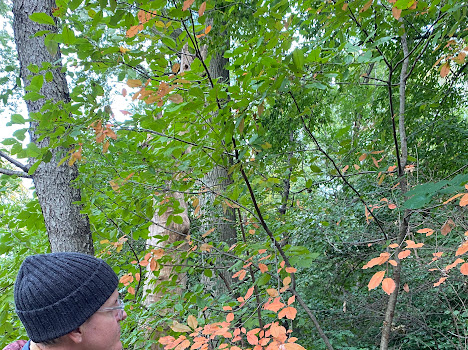
For those looking for help in identifying trees this season or in any season, a field guide like Day’s, which includes illustrations by Trudy Smoke, or a phone app, such as iNaturalist, can help. Russell leads tree identification walks in Central Park for $15 a person.
Both he and Day believe New Yorkers benefit from knowing their woody and other wildlife neighbors. Day even proposed naming her street tree guide “Meet the Neighbors.” She borrowed the title from the headline of a New York Times article about her previous guidebook. (Her editor worried about overlap with the film Meet the Fockers.)
Being able to recognize trees connects people to where they live, Russell said. “These other forms of life that we share a community with don’t become this abstract phenomenon that are just kind of like window dressing throughout our lives,” he said. “All of a sudden, they begin to inform our own identities.”
To receive WSR’s free email newsletter, click here.









Lovely pix. Thanks.
Very nice article and the pictures. Thank you.
Well done article. Thankful that there are no political comments.
Nice work, Ms Eissner!